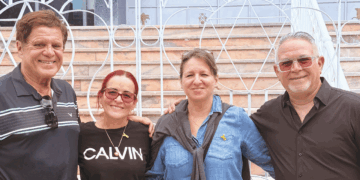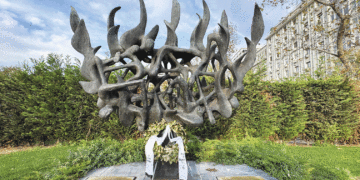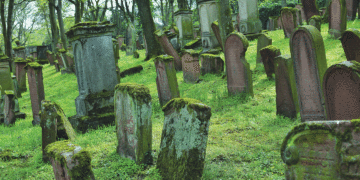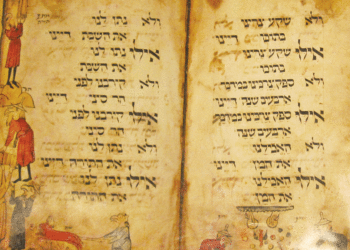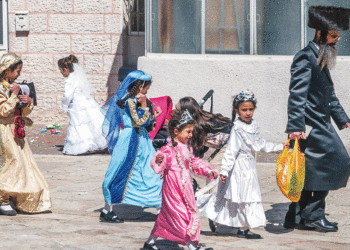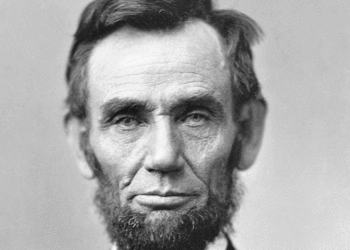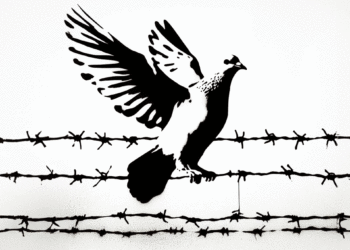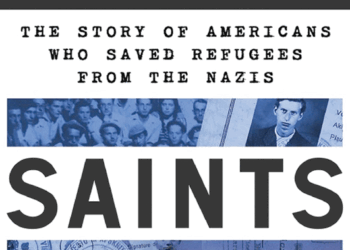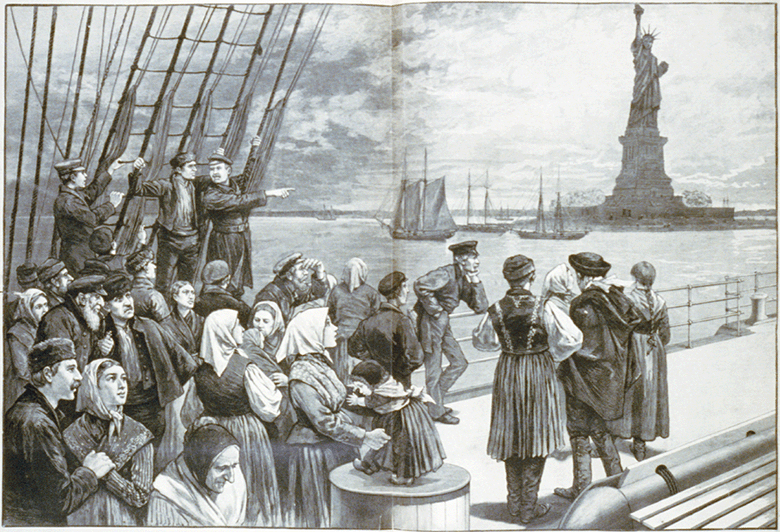
By NEAL GOSMAN
“This synagogue [Kahal Kadosh Beth Elohim] is our temple, this city [Charleston] our Jerusalem, this happy land [the USA] our Palestine.” — Hazzan Gustavus Poznanski, South Carolina, 1841
As Israel’s war against Gaza, Hamas, et al. continues, we American Jews can share some lessons for that beleaguered land.
From the First Amendment to the U.S. Constitution: “Congress shall make no law respecting an establishment of religion, or prohibiting the free exercise thereof.”
And Jewish rights in the Colonies date to the 1669 Fundamental Constitution of the Carolina Colony, which was drafted by John Locke: “No person whatsoever shall disturb, molest, or persecute another for his speculative opinions in religion, or his way of worship.”
Although European Enlightenment principles and religious liberty were built into the DNA of the new American republic, we also see serious design flaws in the American project. For example, European settlement took place on lands and used resources seized from Indigenous peoples. Also, the accumulation of American wealth was derived from slave labor.
The State of Israel lacks a constitution at all. It is past due time to rectify this foundational omission.
The Zionist enterprise was an attempt to find a land of refuge from European anti-Jewish pogroms and persecutions. When a Zionist lifeboat was launched in 1897, it was tethered to the spirit of European nationalism. Fires were burning: “A land without people for a people without a land”.
But that land simply did not exist anywhere on the globe.
Although Eretz Yisrael (Ottoman Palestine) was the primary Zionist target, when the British government offered Kenyan land to the 1904 Zionist Congress, Herzl and the western European leadership were willing to consider that option.
Relief was urgently needed; the romantic notion of the Judean homeland could come later.
Few American Jews were interested in Zionism. America was hungry for settlers and immigrants to fill appropriated Indian lands and industrial workbenches. Between 1882 and 1924, millions of Eastern European Jews migrated west; millions of other Jews in Europe stayed put, prepared to fight for their rights where they already lived.
A few thousand chose Palestine.
Lacking God’s direct redemption, most traditional Jewish religious leaders then considered political Zionism a heresy. The founders of political Zionism were generally secular.
Established Jews were not interested in having a dual national loyalty. They were demanding civil rights in their countries — citizens practicing the Jewish religion — not being a distinct and displaced nation within someone else’s land.
A minority of Eastern European purists, though, were willing to sacrifice the need for immediate Jewish safety in place of future return to a land of Biblical origin. A land already occupied by another people. A land of limited carrying capability. A land governed by a foreign empire.
The 1906 Zionist movement split between the “Zion-Zionists” of Eastern Europe and the Jewish Territorialists. Many Territorialists argued that “the People make the Land, the Land does not make the People”.
Additionally, early Zionist visions came in various flavors. Prominent Zionists such as Ahad Ha’am, Nathan Birnbaum, Mordecai Kaplan, Judah Magnes, Martin Buber and Albert Einstein envisioned a Jewish homeland or spiritual center that did not entail Jewish state sovereignty over an existing non-Jewish population that had been there for hundreds of years.
Even the significant Balfour Declaration of 1917 stated quite clearly that its aim was “the establishment in Palestine of a national home for the Jewish people” — not that Palestine become a Jewish State: “it being clearly understood that nothing shall be done which may prejudice the civil and religious rights of existing non-Jewish communities in Palestine.”
The tragedy, or crime, of the 20th century for Jews was, of course, the Shoah, an extermination campaign of a magnitude that no one could imagine until it was too late. In 1924, with the passage of the Johnson-Reed Act, the United States closed its borders to Eastern Europeans. The Evian Conference of 1938 in Europe closed the gates of refuge elsewhere.
Although tens of thousands of American Jews identified as some flavor of Zionist in the 1930s, and more than 200,000 German and Central European Jewish refugees had made it to Palestine before the British White Paper of 1939 closed the door, it wasn’t until after the extent of the Holocaust was known, in 1945, that American and world pressure developed to open Palestine as a place for Jewish survivors.
In 1948, Israel became a refuge for a million stateless Jewish survivors of the Shoah. Additionally, half the Israeli Jewish population traces back to retaliatory expulsions from Arab lands. Then came Jews from Ethiopia, Russia and elsewhere seeking refuge. Israel is generally not a colony of imperialists that can return to their origin.
America’s original sins demanded a reckoning. We Americans, including Jews, had to fight the bloody Civil War to fix some of our foundational errors — to expand free and equal citizenship. Later we allowed women to vote. We are still confronting our inborn racism and reconciling with Native peoples. We are trying to become a country of free people with equal rights and mutual respect.
We do have a written and tested constitution and can define the borders of our land. We do not have an established religion, and we do not have an ethnic national state.
As an American Jew, I write this for other Jews — especially to my Israeli children, grandchildren and great-grandchildren who seek to make a life and future in that unhappy land. (Someone else can write to Palestinians.)
The State of Israel is overdue to face its original omissions. Its founding government members, all but one foreign-born Ashkenazim, decided neither to make a constitution nor to define the state borders.
Israelis and Palestinians have a lot of hard work to do between and among themselves in that place where both live.
They are missing a number of key ingredients: no written constitution; no bill of rights; no effective self-governance for half its inhabitants; no clear borders; no separation of synagogue (or church and mosque) and state; no mutual language; no shared vision of the duties and responsibilities of citizenship; no common understandings of national shared history; no sense of equality of peoples; no sense of shared destiny for all its inhabitants.
These deficits are not sustainable in the long- or even medium-term.
Judaism is a 3,000-year-old civilization. It developed from a place-based ritual cult to a God-centered ethical value system. God did not promise the Jews a land. God and the Jews made a covenant, a mutual agreement, that the people could have the land so long as they behaved according to God’s justice.
Only for brief periods of Jewish history did Jewish political states occur — all to fall by the swords of arrogance in their times (see Zechariah 4:6).
The rabbis tasked God with the job of redemption; Bar Kochba was banned from the liturgy; Hanuka was redefined as a miracle; mussar (moral conduct or discipline) was dominant over muscle.
The first American to advocate for a Jewish state in Eretz Yisrael was Mordecai Manuel Noah, in 1818. Soon after his death, his son J. J. Noah gave a public address in St. Paul on the “character of the Jews,” in which he hoped that “when the inheritance of Judaism was restored … they would choose a republican form of government, a prototype of that of the United States of America.” Later, Jacob Jackson Noah was elected as secretary of the 1857 Constitutional Convention that established the State of Minnesota.
***
Neal Gosman, of St. Paul, is a veteran of both the U.S. Civil Rights Movement and the War in Vietnam and a longtime peace and justice advocate. He can trace by name his American roots to the early days of the republic and his Jewish roots back over 500 years. He has three daughters, 31 grandchildren and four great-grandchildren, all Israeli Jews. He can be reached at: ndgosman@gmail.com.
(American Jewish World, December 2024)


